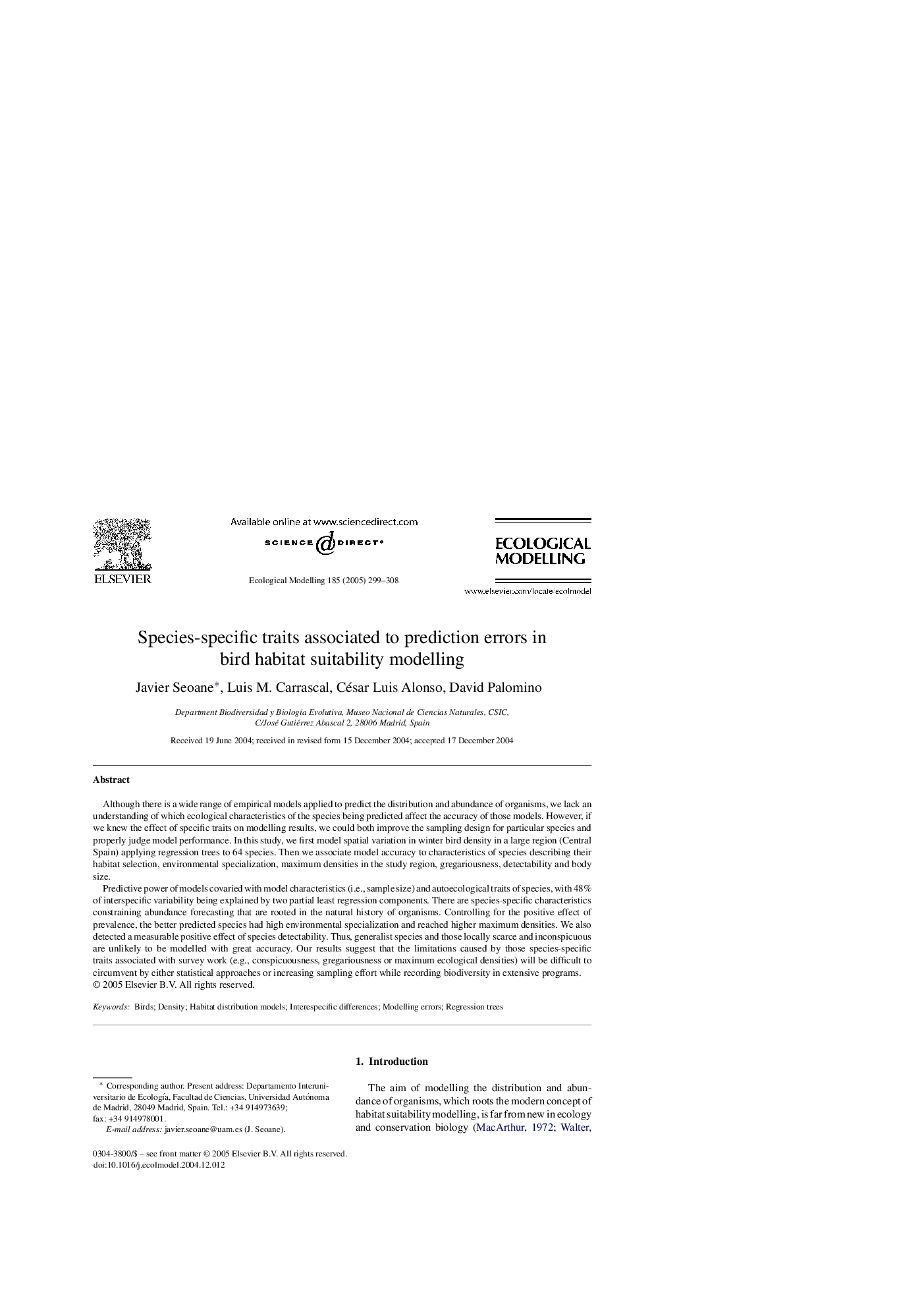| Article ID | Journal | Published Year | Pages | File Type |
|---|---|---|---|---|
| 9443391 | Ecological Modelling | 2005 | 10 Pages |
Abstract
Predictive power of models covaried with model characteristics (i.e., sample size) and autoecological traits of species, with 48% of interspecific variability being explained by two partial least regression components. There are species-specific characteristics constraining abundance forecasting that are rooted in the natural history of organisms. Controlling for the positive effect of prevalence, the better predicted species had high environmental specialization and reached higher maximum densities. We also detected a measurable positive effect of species detectability. Thus, generalist species and those locally scarce and inconspicuous are unlikely to be modelled with great accuracy. Our results suggest that the limitations caused by those species-specific traits associated with survey work (e.g., conspicuousness, gregariousness or maximum ecological densities) will be difficult to circumvent by either statistical approaches or increasing sampling effort while recording biodiversity in extensive programs.
Related Topics
Life Sciences
Agricultural and Biological Sciences
Ecology, Evolution, Behavior and Systematics
Authors
Javier Seoane, Luis M. Carrascal, César Luis Alonso, David Palomino,
